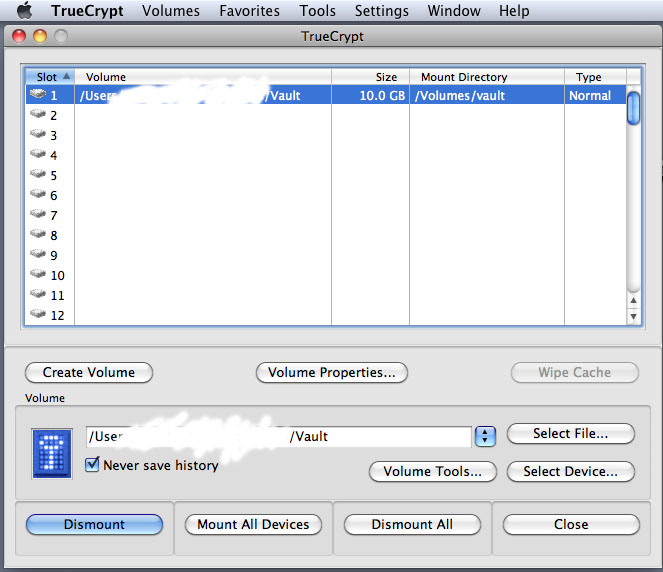A few days ago we had yet another round of unseasonably warm weather and rain. That caused my first shiitake mushrooms to pop out. They had frozen by the time I found them, and they won’t be edible, but at least it’s a good sign. I’m hoping it means that I will have a decent mushroom crop in the spring.
It's good I like turnips
I’m sure I’ll never get over the thrill of knowing that supper came home in a wheelbarrow rather than a grocery bag. I harvested the remaining turnips today, because they’d stopped growing, and the risk of a hard freeze is increasing. It seems strange that the garden is still producing turnips, mustard, and kale during the second week of December. I really don’t have a reference for whether this is abnormally late for these crops in this area. Fall gardens are frost-hardy. And if it is unusually late for the garden, then that’s the upside of climate change — a longer growing season.
The soil was nice and wet when I pulled the turnips. Most of the turnips came up with a clump of soil, and in almost every clump of soil was a nice, fat earthworm or two. The organic soil amendments I’ve dumped on the garden are really paying off. I spread the dirty turnips in the grass and hosed them down to wash them, then spread them out to dry in the wind and sun. Now they’re in the basement. There was about three-quarters of a bushel of turnips left from a turnip patch of about 175 square feet. I’ve been eating, and giving away, turnips since October. I’ve prepared them every way I can think of — steamed and sliced, with butter; curried; roasted; creamed in yogurt. One turnip dish that is good enough for company is turnips au gratin.
I don’t know why turnips are almost universally scorned. For the garden, they’re an easy fall staple, and they’ll keep well into the winter. No doubt many a peasant has been kept alive by turnips in hard times. I’ve actually been served turnips once in a fancy restaurant — Alice Waters’ Chez Panisse in Berkeley. As I said to the waiter, it takes confidence to serve turnips.

The turnip tops made a wheelbarrow load for the compost.

This cabbage is still going, but I doubt that it will have time to make a head before a freeze gets it.
Royalty, rusting
Fortunately I’ve never been badly afflicted with a craving for fancy cars. However, I’ve had a thing for Jaguars ever since I was a teen-ager — the sedans, not so much the sporty types. I came across this old guy today on a country backroad north of me, parked outside a garage. I believe it’s a 1957.
I was able to manage my thing for Jaguars by renting one occasionally for a road trip. One of the best road trips I ever had was in a Jaguar S-type, from San Francisco to Los Angeles, down Highway 1 along the coast. Driving down, when I was in the lane on the ocean side, I took it easy. But heading north on the return to San Francisco, with an empty lane between the car and a long descent into the Pacific, I must admit that I let that Jaguar show me what it could do, and it was thrilling …
LED lighting

There are five LEDs in these spotlights, in finned aluminum heat sinks.
LED light bulbs are still pricey, but the cost has been coming down, and the variety of bulbs available is increasing.
I wanted interesting lighting for my living room, which has a 21-foot ceiling and lots of planes and angles. My concept was to use spotlights for indirect light — not too bright — bounced off the walls and ceiling. I wanted fixtures that use bulbs with a standard base rather than odd bases that would lock me into high-priced and inefficient bulbs. When the house was complete and time came for the final inspection, I put ordinary 60-watt incandescent bulbs in these fixtures just to get through the electrical inspection — a total of 15 bulbs. So for more than two years, that’s what I’ve had, and of course they didn’t create the right effect at all. The power consumption also was outrageous — 900 watts when all the lights were on. So I very rarely used them. I was never able to find spotlight bulbs (as opposed to floodlights) in compact fluorescent. But LED spotlight bulbs have started to come onto the market at prices that are bearable.
Philips makes a line of LED bulbs that can be found at Home Depot. Amazon, and specialty retailers online, also carry a pretty good range of LED bulbs these days.
The color of light that you get from LED bulbs is not ideal, though some are better than others. My corner lights (each bulb is 3 watts) are too blue, but I decided that I can live with since they’re not terribly bright and since the light is bounced off of warm-colored walls. The three lights up at 16 feet (6 watts each) are a much warmer color. The warmer color lights tend to cost a bit more, and, per watt, they’re not quite as bright.
Now when all these lights are on, I’m drawing 54 rather than 900 watts. Of course I’ll use the lights more, now that they’re not sucking so much electricity.
It might be possible to justify the cost of LED bulbs now because of their long life and low power consumption. There’s a good chance that they’ll last me 15 years or more.
How your privacy is bought and sold
Thanks to a WikiLeaks document dump, we now know more than ever about how private corporations are spying on all of us (unless you’re off the grid) and selling the data to whoever will pay for it, including, of course, governments.
If you use a cell phone or a computer, you are being monitored. One of the leaked documents reveals that the National Security Agency (NSA) began building last January a secret $1.5 billion installation in Utah to store “terabytes of domestic and foreign intelligence data forever and process it for years to come.”
This is being reported on security web sites and places where geeks hang on. Here’s a link to the ITWorld story, which has some of the details.
It will be interesting to see what the mainstream media say about this. I’m expecting them to ignore it.
Dying of consumption

Smike on his deathbed, dying of consumption — Nicholas Nickleby
It’s a dark pun, but the people of the 19th century, and we in our own time, are stalked by the same wasting disease that leads inevitably to ruination if not death — consumption.
Today is “black Friday.” The media (feeding the frenzy while pretending to cover it), is already full of horror stories. At a Walmart in Los Angeles, a woman shot pepper spray at 20 people so that she could grab the consumer goods she wanted first. At a mall in Fayetteville, North Carolina, there was gunfire. Last year, as I recall, people were trampled in stampedes when Walmart opened its doors.
These people were not looking to feed their families. They were looking for stuff, stuff that will be in landfills in a few months.
And here is yet another story from the right-wing blogosphere on how ill-prepared Boomers are for retirement. Fifty-six percent of retirees have debt. Forty percent of Boomers plan to work “until they drop.”
Metaphorically, at least, they are dying of consumption. How can they know so little about personal finance? I was stupid with money too when I was young, but I came to my senses around age 40 when I realized that I actually would be old someday (young people think that growing old is impossible). And I realized that I did not want to work for the rest of my life.
Strangely enough, we could learn much about personal finance from our archenemy — corporations. I’m talking about honest corporations, of course, not those that are looted in leveraged buyouts or executive scams.
I was lucky to have worked for a good corporation for the last 15 years of my working life — the Hearst Corporation. Hearst is a private corporation, so it doesn’t have to worry about a stock price and kiss the behinds of Wall Street. It was cash rich and, at least I was told, never borrowed money. It always spent cash. It didn’t lease — it bought outright if it needed something. And I was told that it didn’t even buy insurance, because the corporation had enough cash to be self-insured.
For years, I had to create budgets for my department and get them approved. I was in San Francisco, but the main office in New York approved the budgets. I never ever, in my career, went over my budget, though other managers sometimes did. It was a point of pride for me — to be able to anticipate my needs for the next year, to budget for those needs, to justify the costs, and then to stick to it.
There is a very important principle in how corporations handle money that every household would do well to keep in mind. That’s the concept of expenses versus capital improvements. Corporations do it that way because of tax laws that don’t apply to households, but the principle is still valid.
Expenses are roughly equivalent to consumption. Expenses, for a household, are things like electricity, groceries, gasoline, clothing, gadgets, etc. You can’t live without incurring expenses, but if expenses are not controlled they will eat your income and prevent you from making capital improvements and prevent you from accumulating assets. Expenses are the money we pee away. Expenses drain our income and do nothing to improve our future.
Capital improvements have to do with things that last a long time and that improve your quality of life. One’s house is the main capital item. A car is another. Even a washing machine is a capital item. A Jaguar, though, is not transportation. That’s a luxury. When you spend capital, you determine what meets your needs and buy that much, no more. Where cars are concerned, for example, the right solution for me was a Jeep, which was a good San Francisco vehicle because it’s short and has real bumpers, and also a good country car, because I now live half a mile down an unpaved road, in the boonies. Similarly, a McMansion is not a dwelling, it’s a wasteful luxury. I have found that 1,250 square feet is more house than I need most of the time. Money well-spent on capital needs also can reduce your future expenses and thus help pay for itself — gas-frugal cars, for example; or energy-efficient houses; or an efficient new heat pump to replace an old, energy-hogging heat pump. In a corporate budget, a capital item must be “justified.” It has to make sense when you do the hard-nosed, cold-blooded number crunching. It has to get past the “bean counters,” as we called them.
If you look at how chronically poor people spend their money, you’ll usually find that they are pissing away their income on consumption and wasteful “expenses,” leaving no surplus for capital improvement and asset accumulation. And, when they incur debt to acquire a capital item, they tend to buy far more than they need because they bought what they wanted rather than what they needed and could justify.
It used to be, in this country, that the centerpiece of household finance was to buy a house with a 30-year mortgage, pay it off, and then retire in that house, mortgage free. The abandonment of that idea is one of the things that is killing the middle class. People started drawing on the equity in their homes to increase consumption. Even when they spent that equity on their homes, it was on stuff that cannot be cost-justified, like granite countertops. Thus they end up with no assets, debt that financed consumption, and out-of-control expenses for processed food, eating out, gadgets, gas-guzzler gasoline, cable television, and stupid luxury items that they saw on TV.
I often tell any young person who will listen the two most important things about personal finance that I ever learned: You must spend less than you make, substantially less when possible. And you must accumulate, else you will have to work forever.
And if I was made dictator for a few seconds, long enough to be granted one wish for my pathetic fellow Americans, it would be this: I’d cut off their cable. That would save them $150 a month while cutting off their access to propaganda and advertising. It also would kill a few corporations that deserve to die — Fox, for example.
But let’s learn from our enemy — corporations, the very people who sponsor the propaganda and the advertising. Again, I’m not talking about scam corporations like Enron. I’m talking about real businesses that actually do productive things and make money at it. They are usually very prudent and hard-nosed in how they spend their money. And that’s one small reason why they are rich and we are not.
The power of ridicule
Now is a good time to try again to make my point about using ridicule to shut down right-wing craziness. I think that some people think that I’m only just being mean-spirited when I argue that liars must be told that they are liars, that people who talk crazy must be told that they are crazy, and that we must do everything possible to make them objects of ridicule.
More thoughtful people might object that if you stoop to such tactics, you risk becoming just like them. Others seem to think that to be shrill is worse than to be a liar. But I would argue that shrillness in defense of truth is not a vice, and that it is virtuous to spray ridicule in the faces of ridiculous, dangerous people. Ridicule in their faces is more effective than pepper spray.
There is historical support for this. Strident condemnation (during Senate hearings) helped bring down Joseph McCarthy. It has often been written that it was largely the work of H.L. Mencken, heaping ridicule on William Jennings Bryan in Mencken’s coverage of the Scopes monkey trial in 1925, that shamed fundamentalists out of the public square for decades until they re-emerged rebranded as evangelicals. They are back, calling themselves Christians even as they despise and blame the poor, cheer for war, worship the rich, and torch the planet. Religion like that does not deserve the slightest scrap of respect or deference. It deserves our contempt.
We could use a few Menckens right now. Though today’s gelded mainstream media would not print a Mencken, now we have the Internet.
I’ve been reading some Mencken lately. I don’t particularly like his voice (just as I don’t like the sound of my own voice when I am talking about fools), and I doubt that he was the nicest person in the world. But he did the country a huge service simply by telling the truth, by writing in such a way that the ridiculousness of deluded and dangerous people is self-evident.
Disk encryption
I’ve written number of articles in the past about ways to protect your privacy on the Internet. I’d like to add a another layer that should be found on the well-defended computer: disk encryption.
Disk encryption is easy. Whether you’re running Windows or a Macintosh, you probably want to do it with TrueCrypt, which is open source and free. With TrueCrypt, you assign a chunk of space on your hard drive to be an encrypted virtual disk. You assign a password that must be used to mount the disk. After the disk is mounted, it’s just like any other disk.
Those who make it their business to snoop on us don’t like disk encryption. At all. Because it’s very hard to break. The Wikipedia article on TrueCrypt describes a case in which the FBI spent 12 months trying to decrypt a disk and failed.
Do law-abiding citizens need things like disk encryption? You decide. I’d argue that now, in the digital era, using technologies that protect our privacy looks a lot like firearms looked to the founding fathers — concerns that led to the Second Amendment. And then there’s the Fourth Amendment with its protections against unreasonable search and seizure. These rights are so important that they’re written into the Constitution. Let’s exercise those rights.
Here’s a basic list of protections that any well-defended computer ought to have. I’ve written about most of these in previous posts:
1. The ability to send encrypted email.
2. A well-defended browser with extensions that block ads, scripts and Flash, and which let you easily control cache and cookies.
3. A proxy system to encrypt all your traffic, prevent your ISP from collecting data on you, and keep your IP address private.
4. Encrypted disk volumes.
5. A secure WIFI network, especially in densely populated places.
All those things can be accomplished with free, open source software.
By the way, a new app for iPad and iPhone was recently released that lets you browse securely through the Tor system. It’s called Covert Browser and costs $2.99.
For my other articles on Internet security, see the “Internet Privacy” category in the column on the right.
What's next, politically: an answer to Ken
Ken, whom I regard as among the brightest and best-informed of his generation, has a concise and thoughtful post this morning in which he ponders the next steps in the evolution of his political views. I think I can guess what he was thinking about as he took the train back to Boston from Concord and a pilgrimage to Walden Pond. I considered adding a comment on his blog, but what I wanted to say is a little long for that. So…
1. Obama: I doubt that Obama and his machine understand the damage they have done and the price they will pay. They convinced millions of people, including young people, that if they worked to get Obama elected, things would change. But nothing changed. Obama governed just like a Republican. He tossed out a few rhetorical scraps from time to time to try to keep the wool over the eyes of those who had worked to elect him. But he also insulted us and boasted to right-wingers and corporatists about how he had betrayed his own base. Is the man so stupid that he thought he’d pay no price for that?
An analysis by the Nieman Foundation released on Oct. 3, when Occupy Wall Street was just beginning, seemed to conclude that the reason there had been no real protest from progressives was because, with the election of Obama, progressives thought that the mission had been accomplished. It took a while for the truth to sink in.
There are two important angles on that truth. The first and most obvious angle is that progressives were betrayed by Obama, that he used us to get elected, and then, to use Ken’s metaphor, cuckolded us. The second truth, and something about which I’m not sure Ken would agree with me since he speaks favorably of a third party, is that Obama’s election and subsequent betrayal shows that the 99 percent cannot just vote themselves out of this. It’s very important, I think, to acknowledge that truth and to do our best to understand why it is true. This truth, I believe, is so important that I am going to repeat it, in bold: We cannot vote our way out of this.
2. Voting won’t work. Reason 1: Once an elite succeeds in owning, corrupting, and controlling all the branches of the American system of democracy, it becomes almost impossible to “work within the system” to take the system back. That’s the whole point, of course, in owning, corrupting, and controlling the system. Votes no longer matter — only money matters. Once Congress becomes a pay-to-play system of hogs at the trough, only hogs at the trough can get elected. You don’t believe me? Try running for Congress and see how far you get. The courts not only back this up, the Supreme Court is actively looking for more precedents that it can use to strengthen the importance of money and weaken the importance of votes. Likewise, the White House is staffed by corporatists, many of them from Goldman Sachs. They don’t let people run for president unless they’re pre-approved by the establishment. Obama proved that.
3. Voting won’t work. Reason 2: The American people are lost in a sea of propaganda. The propaganda comes in two flavors: Right-wing propaganda, of the type produced by right-wing “think tanks” and dispensed by Fox News and Republican politicians; and establishment propaganda, which is pretty much everybody else. You only have to examine how the media fully cooperated with Bush/Cheney’s selling of the Iraq war to see how the mainstream media — corporate owned, of course — serves power, not truth. This is not going to change. In fact, it’s getting worse.
4. Voting won’t work. Reason 3: Though it might be possible with decades of work to build a third party that could win a national election against one of the two established parties, I think this is extremely unlikely. As a practical matter, all third parties do is split the vote and throw elections in the opposite of the intended direction. A third-party strategy not only won’t work, it would be absurdly counterproductive. And what’s to stop a third party from being co-opted by the establishment? A third party would be just as vulnerable to corruption in our pay-to-play system as the two established parties are.
Let’s do out best to crunch some numbers. About 25 percent of the American electorate are diagnosable right-wing authoritarians of the submissive type. (Please refer to the work of Bob Altemeyer for documentation of this replicable and replicated research.) They will believe whatever they are told and will vote however they are told. It’s this 25 percent that that ridiculous circus of Republican presidential candidates are playing to. The submissive right-wing authoritarians are ALWAYS going to align their votes with right-wing propaganda. Theirs are the cheapest, easiest votes to buy. Then, next we have the so-called “independents.” They make up another 20 to 25 percent of the electorate. Politicians speak of independents as though independents are some kind of elite voters above the “partisan” fray. But actually we know from statistical studies that “independents” are the most ignorant of the electorate, the least involved. They vote according to their whims. They’re the ones who are swayed by those dumb-as-rocks political ads that are all over television in the last days before an election.
So, around 50 percent of the American population are permanently blind and hopelessly stupid. They are so stupid, in fact, that elections prove over and over that they don’t even understand their own economic interests and that they’re totally capable of, even eager to, vote to increase their own poverty and marginalization. These are the 50 percent of the American people who sell their votes — cheap! — to the 1 percent.
That leaves about 50 percent of the American electorate who are capable of rational thinking. I say “capable” of rational thinking. But they also have moods. They can get caught up in backlashes. Sometimes they vote — or don’t vote — out of frustration. It was partly their frustration actually, and a backlash against Bush, that helped to get Obama elected in 2008. Who knows what kind of mood they’ll be in for the next election. And where the re-election of Obama is concerned, why does it matter much how rational people vote since Obama has governed for the 1 percent?
5. The Overton Window. Probably the biggest accomplishment of the Occupy Wall Street movement is that it has moved the Overton Window. The right-wing propaganda machine, with the co-operation of the establishment media, have moved the Overton Window so far to the right that Barack Obama, who has governed from the center-right, is called a “socialist” by the radicals to the right of him. The OWS movement has forced the establishment media to acknowledge that there are lots of progressive Americans — up to 50 percent, in fact — who have simply been pushed out of the conversation. Isn’t it amazing, really, that it took thousands of people in the streets to get the media to acknowledge that there are people in this country who want to talk about jobs and justice? But there is still a long way to go, because the Overton Window is still so far to the right that we can’t have a national conversation about global warming and the environment. And time is running out on that.
6. How the right wing won. They won because they’ve made a long-term project of it. They won because, for more than 30 years, they’ve been building a right-wing “think tank” and propaganda machine that can control right-wing and “independent” voters. The control of right-wing voters is done largely through alliances with the fundamentalist churches (they now call themselves “evangelical” — same thing). The conversion of the mainstream media from a truth-telling to a power-serving institution has served their cause. They have, through decades of brilliant work, transformed the system so that dollars, not votes, are the fundamental unit of government.
How can this situation be reversed? You’d think that it would not be difficult for approximately 50 percent of the American people to take the country back from a coalition of super-rich (1 percent), super right-wing authoritarians (25 percent), and super-stupid “independents” (24 percent). But it will be very difficult, because they are entrenched and can use all the power of government to preserve their power — up to and including those nifty new militarized, centrally coordinated local police forces that they were so eager to show off to us while they were breaking up OWS protests. And the rational 50 percent are not united and not in agreement about how to proceed.
I think the options fall into three categories.
Category 1: Revolution. Forget it. They have enough police power to put down a revolution while simultaneously fighting nine useless foreign wars. Until, at least, we all go bankrupt.
Category 2: Massive, unrelenting, non-violent civil disobedience. This could work, but it’s incredibly risky. Once confrontation begins, neither side, really, is truly in control of the outcome. Not to mention that they will be violent, even if the protesters are not. And yes they do, and will, use agents provocateurs.
Category 3: Long-term strategies involving education, organization, counter-propaganda, and coordinated economic pressure through boycotts, etc. Since the role of consumer is one of the two roles left to us, well coordinated consumer boycotts could be very effective. The other role left to us, of course, is taxpayer. But laws force us to pay taxes, while consumption is still mostly a choice. Pick a vulnerable company and take it down. Then another, and then another, until they get the message. There’s an important thing to keep in mind here: Our choices as consumers are far more powerful than our votes.
But there’s also a problem with category 3. Can we spend 30 years convincing the country that something must be done about global warming? Can we tell poor children who don’t have enough food at home and who have no hope for an education to wait 30 years? Are we going to let the 1 percent laugh all the way to the bank while we pay the taxes for another 30 years? Are we going to let our infrastructure fall apart for another 30 years? Let them scrape the top off mountains in West Virginia, or frack our water tables, for 30 more years? Impoverish students and crush them with debt for 30 more years? Offshore our factories for 30 more years and base our economy on banks and bubbles for 30 more years? Another 30 years in which the rich can ignore the law while the prisons are overflowing with poor people?
I’m just thinking aloud. But that, I think, is what the supporters of Occupy Wall Street need to spend the winter doing.
















